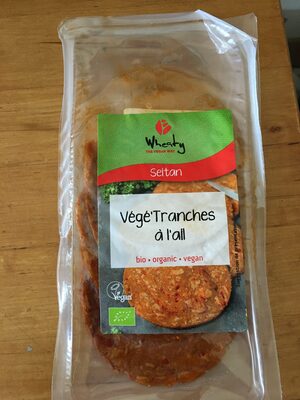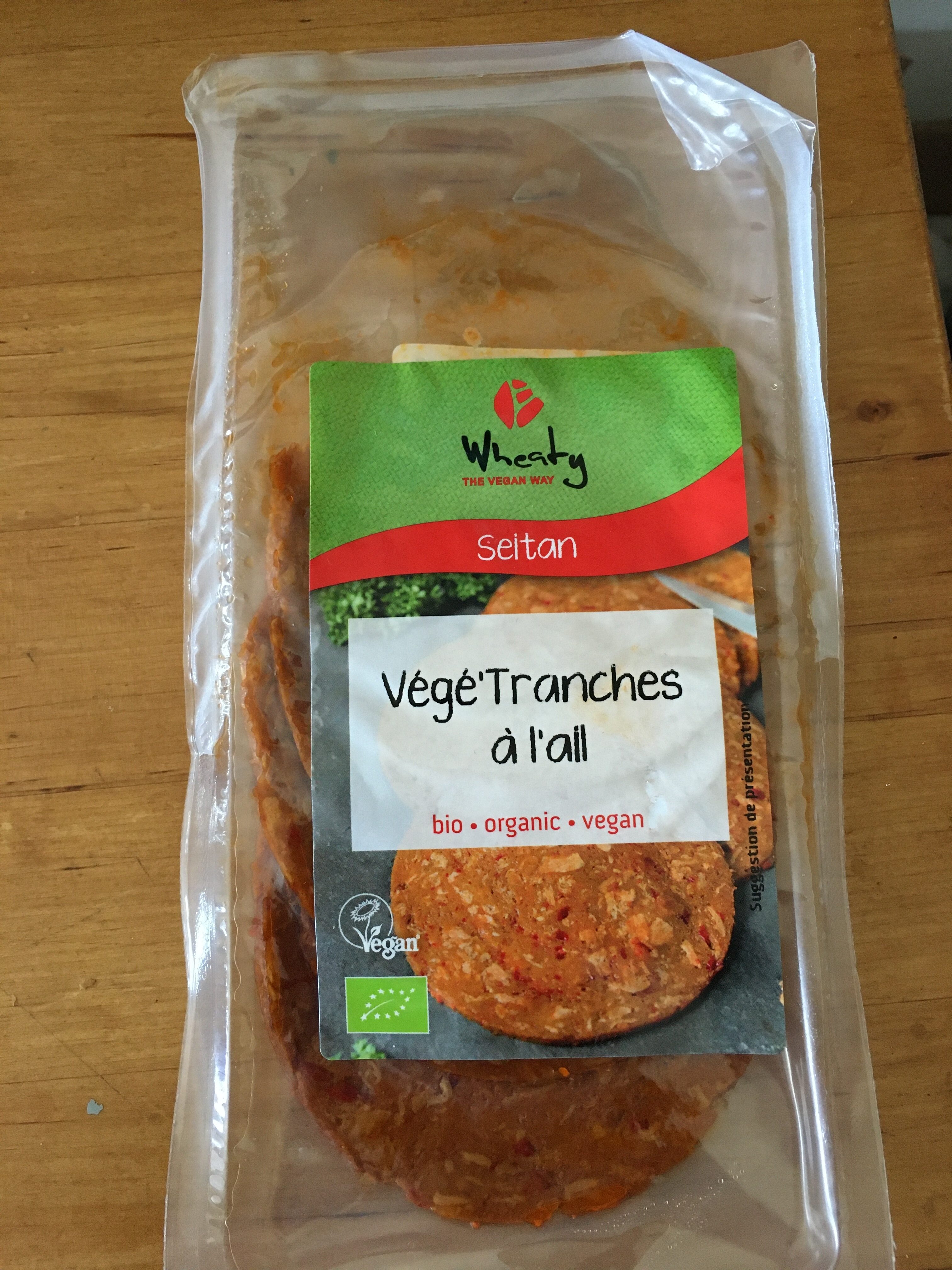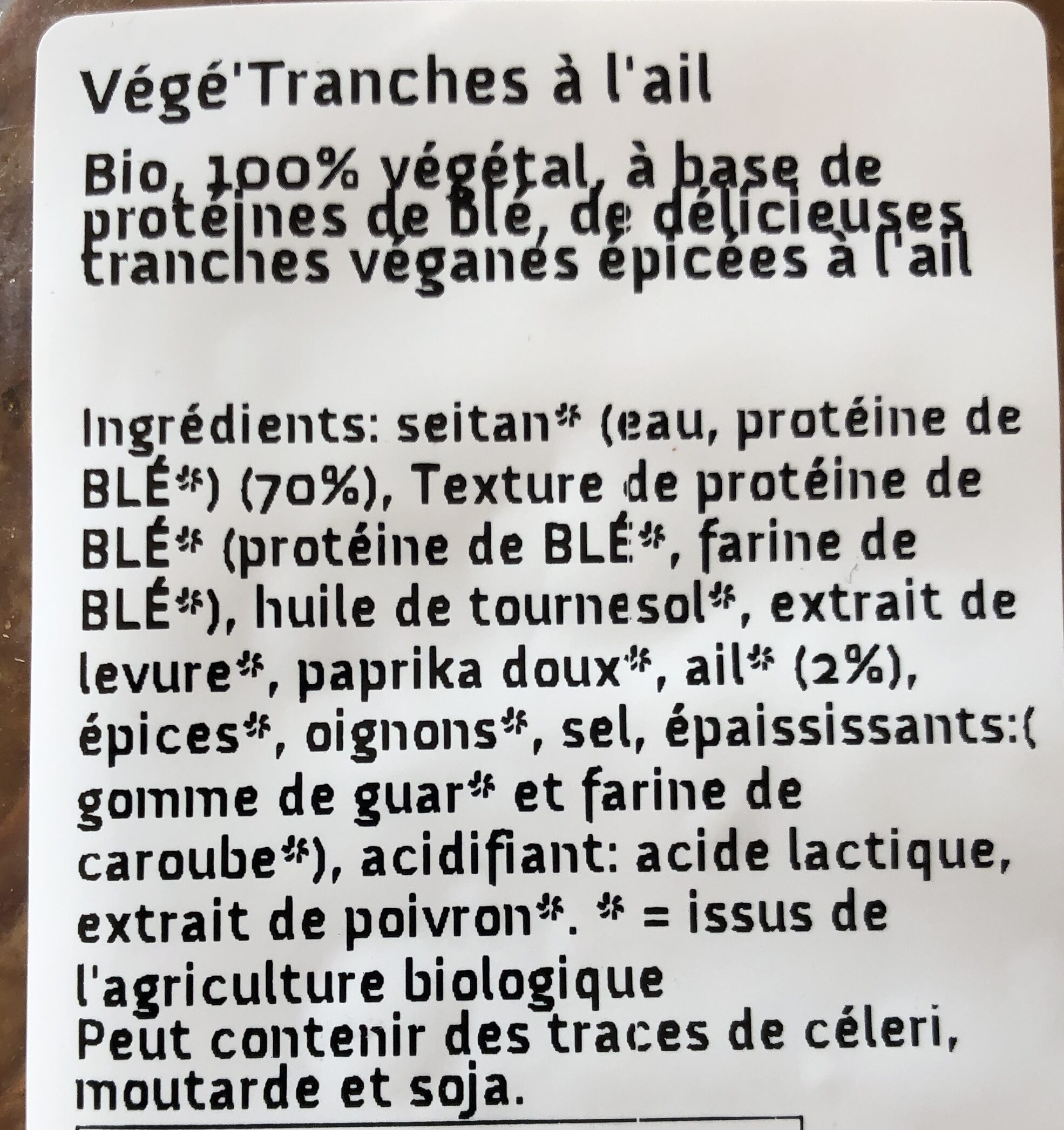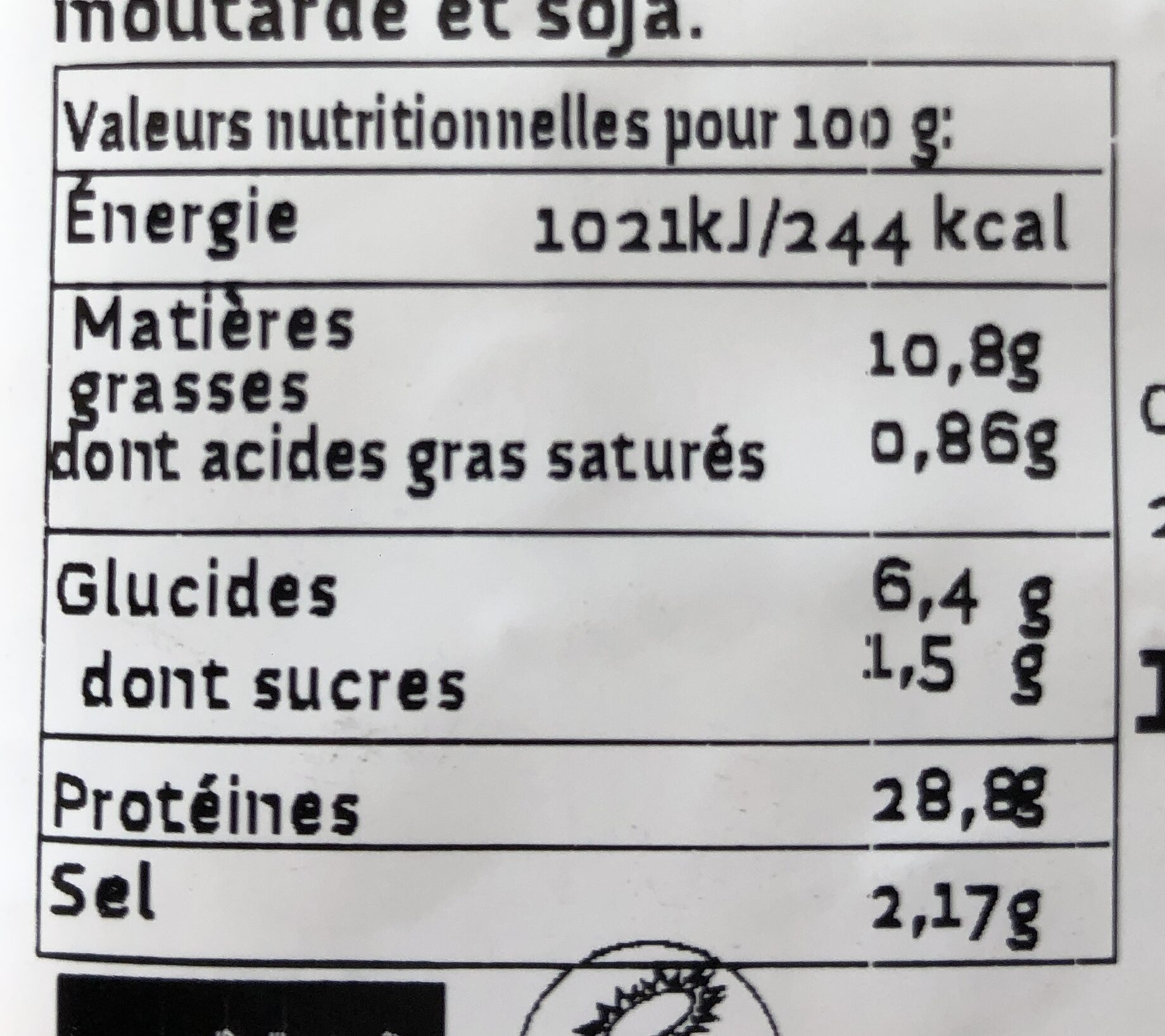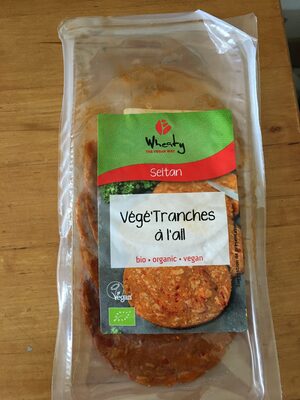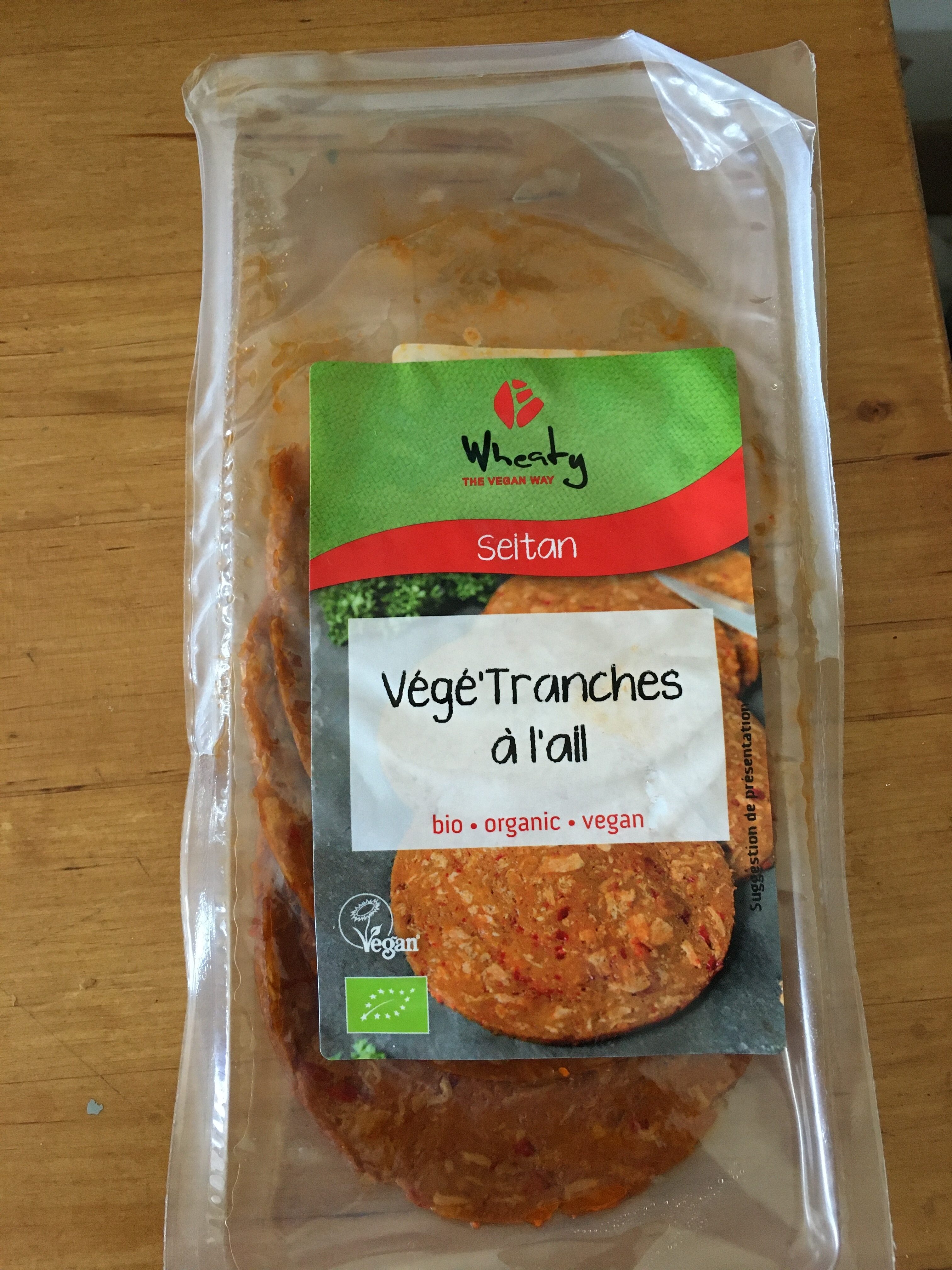Vege’tranches a l’ail - Wheaty - 100 g
This product page is not complete. You can help to complete it by editing it and adding more data from the photos we have, or by taking more photos using the app for Android or iPhone/iPad. Thank you!
×
Barcode: 4032277009109 (EAN / EAN-13)
Common name: Tranches de seitan bio épicées
Quantity: 100 g
Packaging: Plastic
Brands: Wheaty
Categories: Plant-based foods and beverages, Plant-based foods, Meat alternatives, Meat analogues
Labels, certifications, awards:
Organic, Vegetarian, EU Organic, Vegan, DE-ÖKO-003, The Vegan Society, Agriculture UE, Agriculture UE/Non UE, Agriculture non UE, Bio européen, Fabriqué en Allemagne, Végétalien, Végétarien

Manufacturing or processing places: Allemagne
Link to the product page on the official site of the producer: https://www.wheaty.com/products/vegan-su...
Stores: Naturéo
Countries where sold: France
Matching with your preferences
Report a problem
Data sources
Product added on by kiliweb
Last edit of product page on by spotter.
Product page also edited by aidnwave, ecoscore-impact-estimator, lalou38, packbot, teolemon, yuka.FJlHPezRQpAZId3f1pwp8TKLLPy8G9NrCGwWoQ, yuka.sY2b0xO6T85zoF3NwEKvlh1bb-DknxnNOC3RxWSn79y_KMG3XdJY36LFC6s, yuka.sY2b0xO6T85zoF3NwEKvlkZBbNODuRPEKBjuiROE_dueD5LIMc9t5KvWHas, yuka.sY2b0xO6T85zoF3NwEKvlkpqdP_HvGn-Mw77sGKBw--0DrHTW9Z5wq6jLKg, yuka.sY2b0xO6T85zoF3NwEKvll5BSuvZpB2aajrQsG-x3fySKrrsZfhSz6_rHao, yuka.sY2b0xO6T85zoF3NwEKvlmZACYPFrADvFxDfomyAyNGKFozRfvFM5NTTOas.
